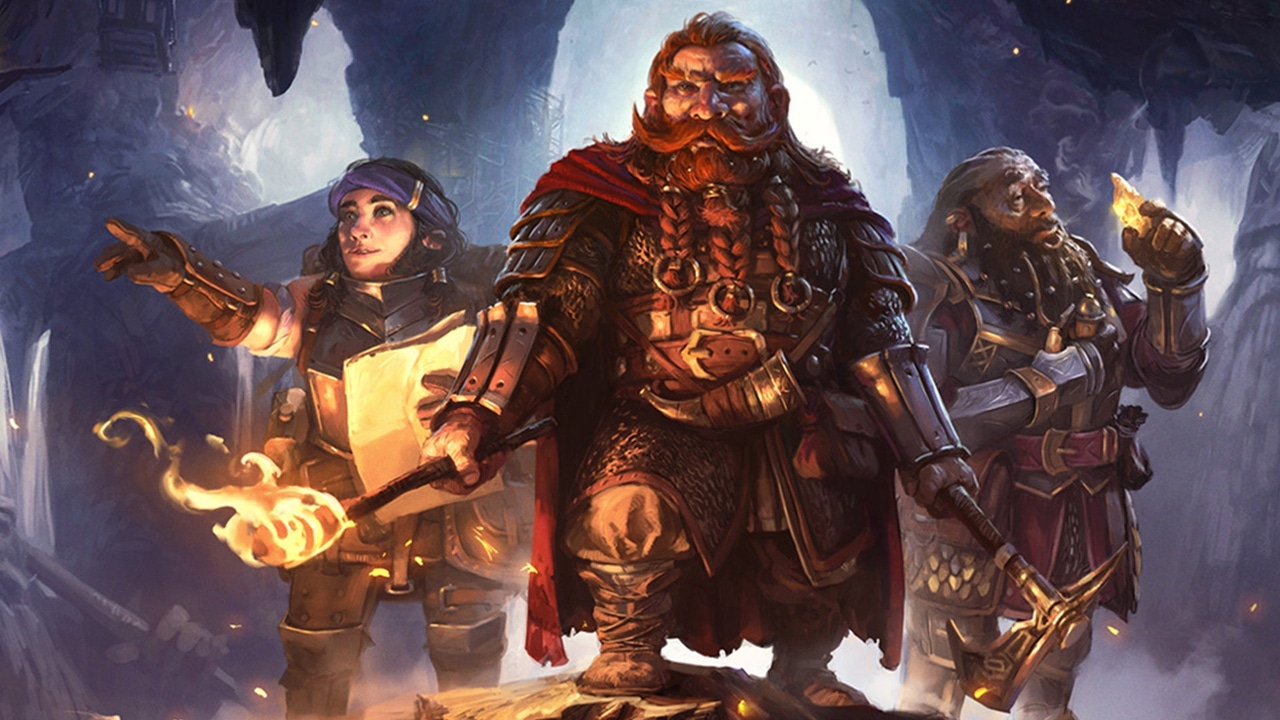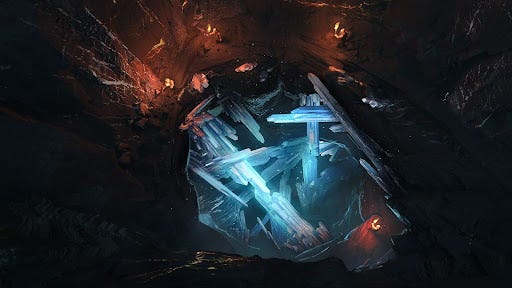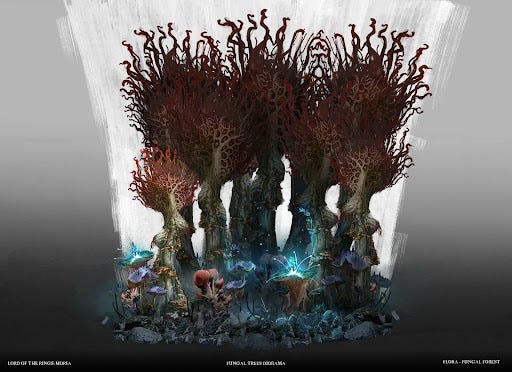
Delving into Dwarven Lore
At its core, we wanted this game to be lore forward. We read and re-read Professor Tolkien's writings, extracting every detail about Dwarves we could. We drew the majority of our material from The Hobbit, The Council of Elrond, the Moria chapters in The Fellowship of the Ring, and Appendix A. We also drew insights from Gimli's character throughout the books, particularly the Glittering Caves of Aglarond chapters.
From Tolkien's Words to Virtual Worlds
Professor Tolkien's visual descriptions of Middle-Earth were broad, emphasizing scale over details. In the time since the books were published, we’ve come to a shared sense of what Dwarven culture and architecture look like based on adaptations from the books and what we know about Dwarves. Because we wanted to only gather our source material from the books themselves, we had to take what Tolkien actually says and separate it from what we imagined. Our goal was to ensure the environments aligned with both the location's history and the story's tone and feel, while still putting our own original spin on it.

Creating Immersive Environments in Moria
Our prime objective was to create immersive and captivating environments—a challenge unique to the realm of video games. Players are both seeing and reacting with the environments, so we had to pay close attention to every last detail. Starting with the map, we knew that we had a lot of ground to cover. While the quiet gloom of the abandoned tunnels and halls of Moria makes for a suspenseful chapter in a larger adventure, we knew that a game set exclusively within Moria would need more variation in atmosphere and tone to keep players engaged and excited to delve deeper. Early in their adventure, players discover the Elven Quarter. This is the first of many locations that serve as deliberate moments of reflection, challenging any preconceptions about Moria and having players question what could possibly come next.
The Making of a Location: The Crystal Descent
Early in the game’s development, we already had a fairly solid conception of what the shape of our world would be. The road through Moria spans from the Doors of Durin (otherwise known as the Hollin Gate) in the west, to the Dimrill Gate in the east. The shortest path would follow the route that the Fellowship took along a broken highway through the mountain. However, we knew that we didn’t want it to be a straight line. Players would be beset by new challenges along the way, and the only way forward would take us into new and unexplored territory: into the Lower Deeps.

The location known as the Crystal Descent was one result of this creative process. In the earliest days of brainstorming, one of the concepts that quickly rose to the top was inspired by a real-world location that was found in Chihuahua, Mexico in 2000. Due to a combination of extraordinary conditions, this cave is filled with crystals that have grown to colossal size over a span of hundreds of thousands of years. While a place like this may seem otherworldly on Earth, it felt like a perfect fit as one of the many secrets hidden beneath Caradhras. Through the Crystal Descent, our intrepid Dwarves would venture ever deeper, leaving behind the haunting gloom of the Mines of Moria, and descend into a realm that even the Dwarves of Khazad-dum before the fall had largely forgotten.
The Lower Deeps
From the start, we knew that we wanted the Lower Deeps to be the closest thing that Moria has to a true wilderness. As with almost all locations in Moria, it still has its own layers of history, but here that history is so deep and so long-forgotten that it has largely crumbled away into the dank mire. Once, these caverns and halls were inhabited by Dwarves of Belegost and Nogrod, refugees from the Blue Mountains that fled to Khazad-dum toward the end of the First Age. In time, they moved on, and the city in the deep faded into the shadows of memory.

In The Fellowship of the Ring, Gandalf mentions that the lowest levels of Moria are flooded. With this one fact from Tolkien, the look of the Lower Deeps began to take shape. Early concepts for the Deeps (known as the Grottos in development) were still quite architectural. As we developed the location, the presence of water took more and more prominence, and the whole area transformed into something much more wild. In contrast to the dry and desolate Mines above, the Deeps would be a subterranean swampland with life in surprising abundance.

Taking inspiration from the deep oceans of Earth, we also knew that we wanted much of this life to be bioluminescent, having an existence completely cut off from the world above. We spent a lot of time developing the concepts for the fungal flora that populates the deeps. The goal was to create something that feels at once very believable, but also otherworldly and a bit unexpected. We gathered real-world reference of many different varieties of exotic and alien-looking fungi, and Samuele, our talented concept artist, integrated all these ideas and transformed them into the stands of fungal trees that we see in the game.

For the shape of the place, we also knew that we wanted something very different from what has come before. The Mines of Moria above have a vertigo-inducing verticality with the constant danger of plummeting to your doom, but the Deeps are broad and flat, and seem to go on in every direction with the great weight of the mountain above pressing down upon them. In a similar way, many of the qualities of each location in Moria are guided by the locations before them. The goal is always to create a series of environments that each feel fresh and interesting to encourage further exploration.

This is just a small piece of the effort and thought we put into imagining Khazad-dûm for the Fourth Age. What do you want to hear about next? Let us know in our Discord!
Read more about:
Featured BlogsAbout the Author
You May Also Like









